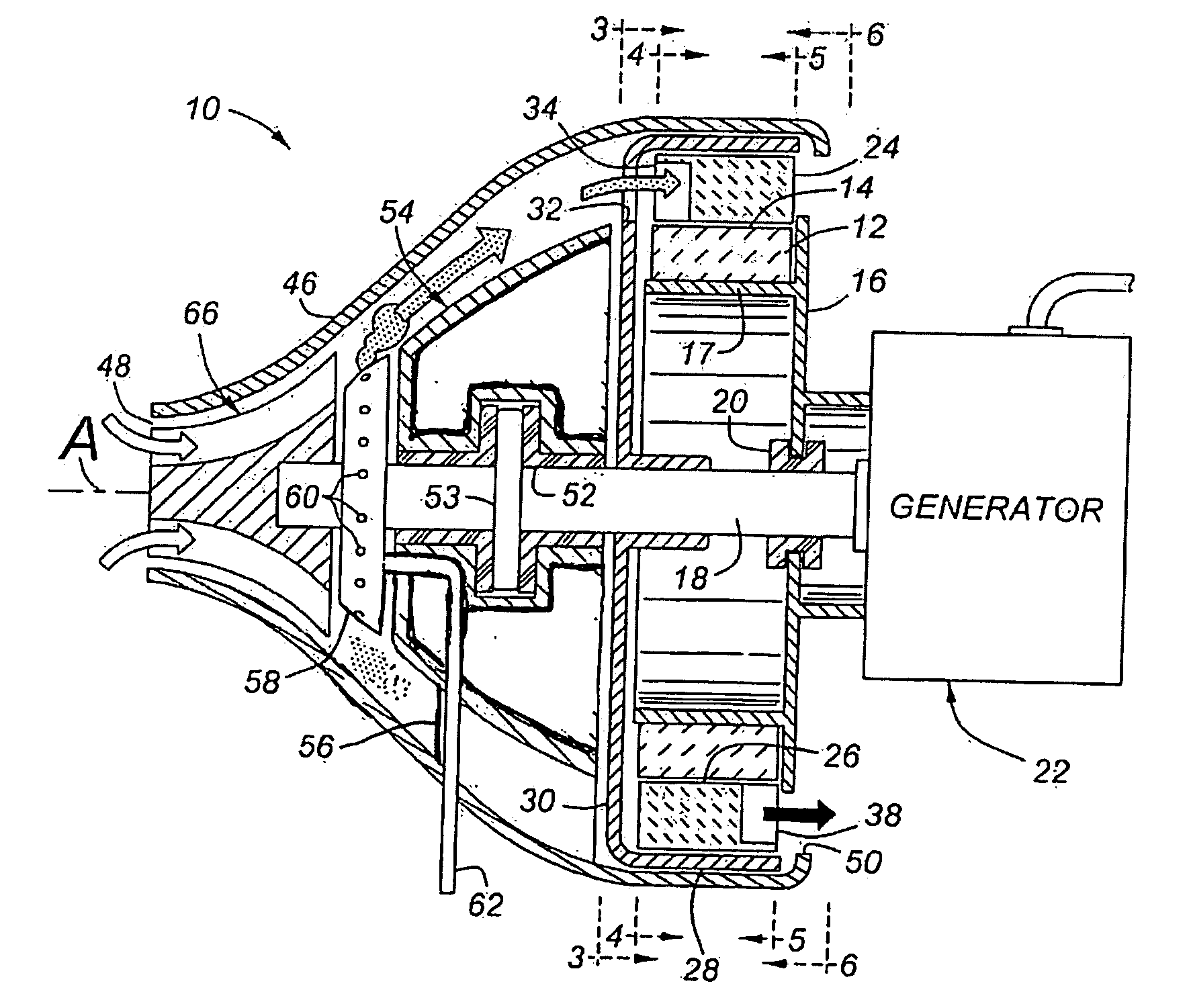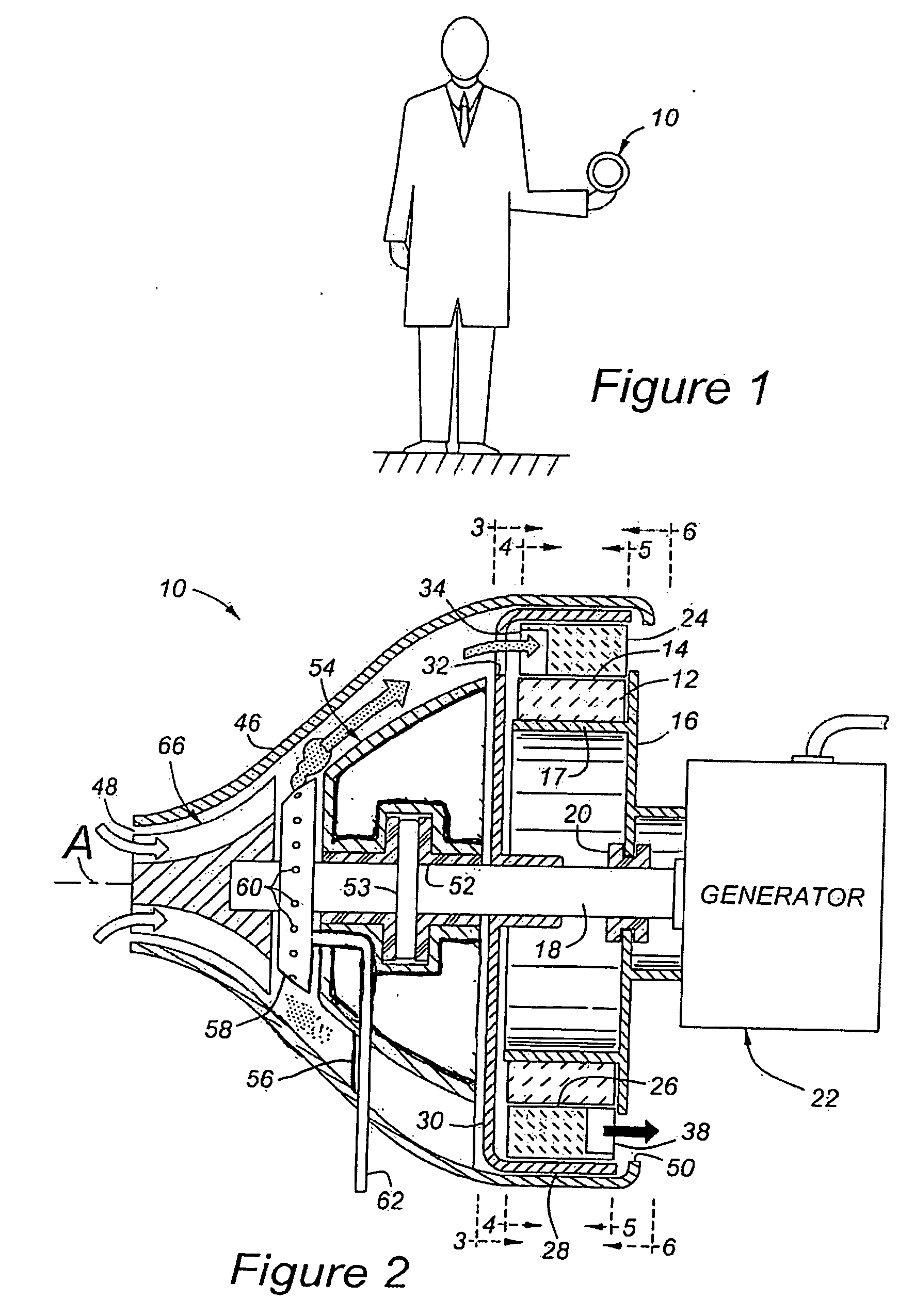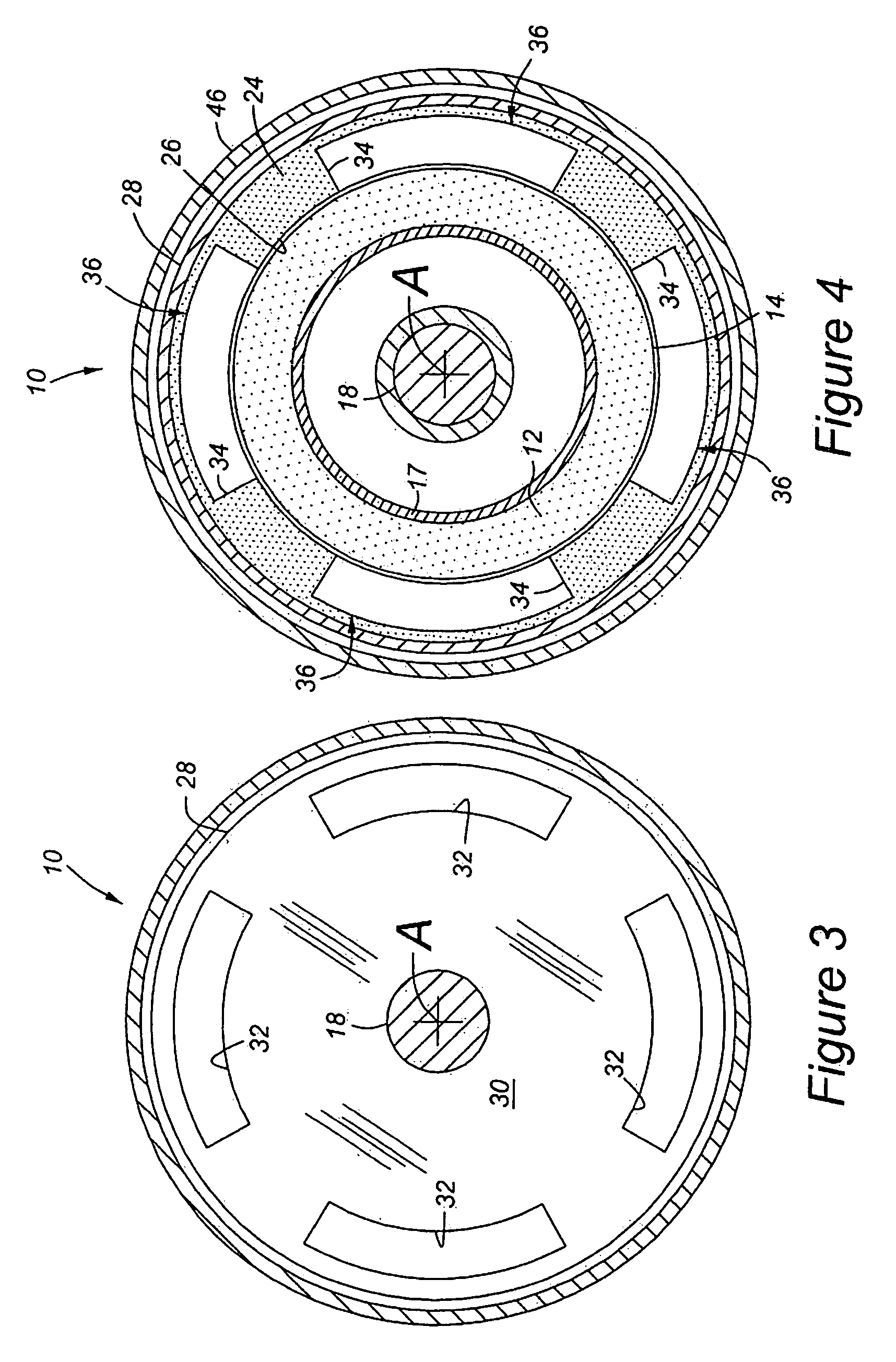Rotary ramjet turbo-generator
a rotary ramjet and turbo-generator technology, which is applied in the direction of rocket engine plants, machines/engines, composite engine plants, etc., can solve the problems of severe limits on the performance of a conventional gas turbine engine, limited mass-specific power achievable, and limited high-temperature material performance, etc., to achieve greater mass-specific power, facilitate higher thermal efficiency, and prolong service life
- Summary
- Abstract
- Description
- Claims
- Application Information
AI Technical Summary
Benefits of technology
Problems solved by technology
Method used
Image
Examples
Embodiment Construction
[0030] Referring to the Figures, wherein like numerals indicate like or corresponding parts throughout the several views, an inside-out Brayton-cycle rotary ramjet engine according to the subject invention is generally shown at 10 in FIGS. 1 and 2. The ramjet engine 10 is of the type which can be scaled to fit any application, from large-scale power generation units producing electricity in the megawatt ranges, to small-scale engines and turbo-generators producing less than 1000 watts shaft power. The engine 10 includes a stator 12 which has a generally annular, radially outward surface 14 centered about a central axis A. In the preferred embodiment, the stator 12 is stationary, but could be configured to rotate with or against the rotor 24. This outward surface 14 of the stator 12 may be generally cylindrical, as depicted in the Figures, or may be conically tapered or contoured in some fashion to provide optimal performance. Preferably, the stator 12 comprises a ring-like construct...
PUM
 Login to View More
Login to View More Abstract
Description
Claims
Application Information
 Login to View More
Login to View More - R&D
- Intellectual Property
- Life Sciences
- Materials
- Tech Scout
- Unparalleled Data Quality
- Higher Quality Content
- 60% Fewer Hallucinations
Browse by: Latest US Patents, China's latest patents, Technical Efficacy Thesaurus, Application Domain, Technology Topic, Popular Technical Reports.
© 2025 PatSnap. All rights reserved.Legal|Privacy policy|Modern Slavery Act Transparency Statement|Sitemap|About US| Contact US: help@patsnap.com



